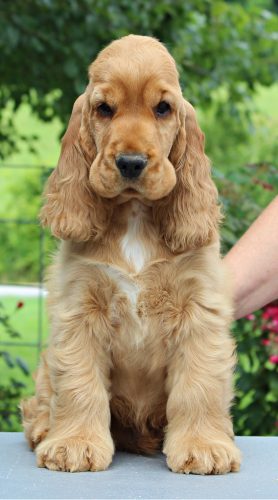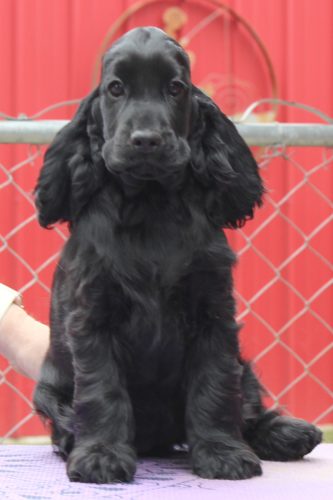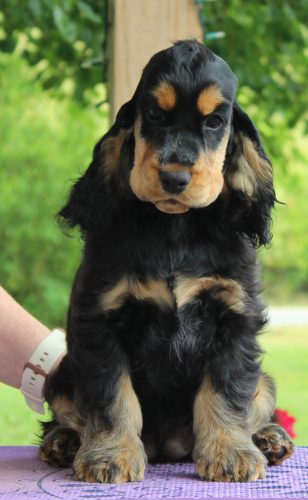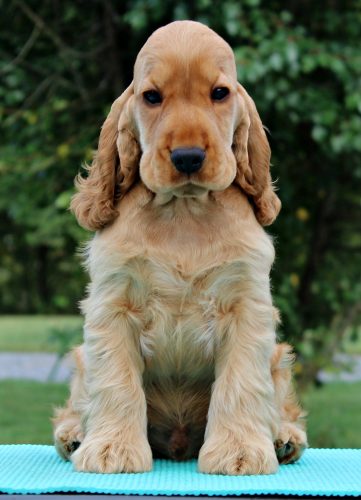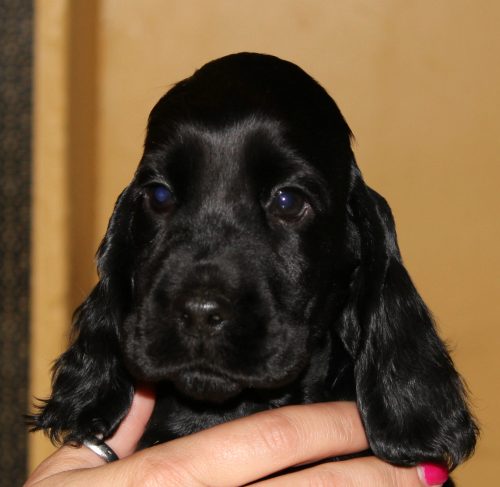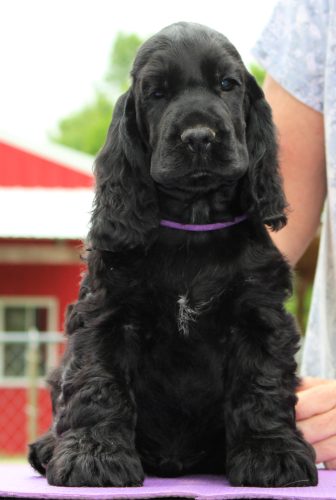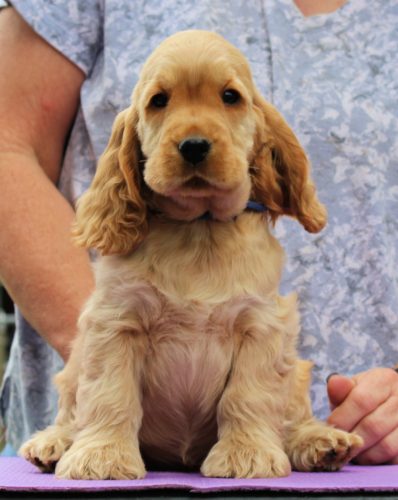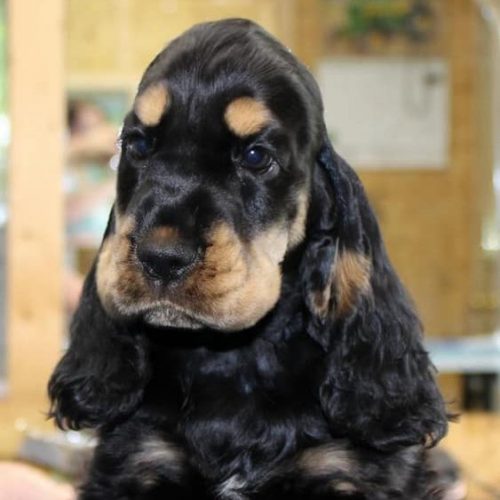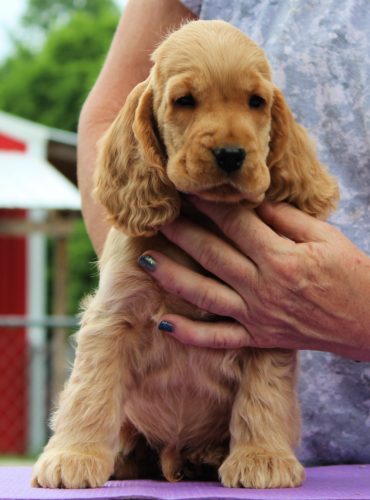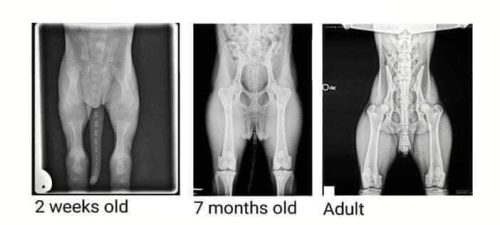1/12/2025 At this time I won’t be accepting any puppy inquiries. Until I have two or three litters and get some people off my waitlist there is no point in adding more people to the list. People can still contact me thru the contact tab here on my website.
11/1/2024 We are all moved and settling in. We’re all still adjusting!
Summer 2024 Unfortunately, my husband got ill and has spent the last 7 weeks in the hospital. He came home this week (July 7, 2024). He still has many doctor appointments to go to and it will be sometime before he is back to normal (hopefully he will fully recover). Because of all this I’ve had to postpone all breedings for 2024. I will have girls coming into season towards the end of the year and if everything is going well for my husband I plan to breed them.
I will do my best to post updates on this page.
8/31/2024 We have HUGE news! We have sold our home in Kentucky and are having a house built in Ocala, FL. We should be closing on our new home in mid September and hope to be all moved by the first week of October. This will be a big change for us moving from acreage to a lot in a subdivision. With everything Bill has been thru, taking care of 10+ acres is to taxing on him. The dogs and I will adjust…
Have you read the articles underneath the pictures below? They are well worth the time to read!
One might ask,” is the English Cocker right for me”?
The answer, for the most part, is a resounding “yes”!
This is a breed that suits virtually any lifestyle or household, within certain parameters.
The English Cocker is a versatile, biddable character that tends to make their owners very happy… They can be content snoozing on the sofa or out running in the field, dock diving, swimming, doing agility, hiking and more. They make wonderful therapy dogs for visiting nursing homes and also make excellent “hearing ear” or “sniffer” dogs. They are eager hunting companions, ready to bustle through thick brush to flush birds and can retrieve even a pheasant with a very soft mouth. For those not predisposed to that type of activity, be aware that a walk for an English cocker is not always about a chance to relieve themselves, but to stop and sniff, and sniff and sniff all the wondrous odors of the outdoors. Indeed taking a fast walk with an English cocker may prove a bit challenging, as they may be on the lookout for the neighborhood critters, often losing themselves in a hedge or bush in the process.
They are a breed that is very food-motivated, which makes them easy to train, but also they can be a bit goofy or stubborn and may take a bit longer to house train. They generally love people, altho some can be a bit aloof, warming up to folks only once they’ve had a more lengthy introduction. It is because they so love to be with their people that they may be more prone to separation anxiety, and why owners may find they are seldom alone, especially in the bathroom or kitchen. English cockers are wonderful dogs for children and are quite tolerant, within reason, of hugs, pokey little fingers, and high pitched squeals. Whether they truly love children and see them as equals or just know they always smell like or are dropping food, may remain a mystery.
As positive as being food-motivated can be, it is often what gets these guys in trouble. Yet is difficult to be angry with a wayward one, because they will invariably be happy to display the trash they just got into or the food wrappers whose contents they’ve just consumed. Seeming to be ALWAYS hungry they can be prone to counter surf, somehow snatching food items that you felt were quite out of their reach. Some have even climbed on chairs and tables to land their prey.
Trash, especially tissues or food scented items, or clean rolls of toilet paper also seem to be favorite items, so waste-bins must be securely closed. When not eating, they often will be holding something, whether a stuffed toy, a tennis ball or maybe your favorite sock. English cockers will act like puppies through much of their lives, but mental maturity seems to click in at age two.
Although English cockers come in over 20 color patterns and combinations, the most common is blue roan. Roan is a term that describes the mixture of white hair with the dominant color, and “blue” is a white dog with black patches with white and black hair mixed (the roaning). An orange roan would be a white dog with orange patches and orange hair mixed with white. Ticking is like freckles of the dominant color, and so, an orange and white ticked dog would be white, with patches of orange, and scattered spots.
Dogs without ticking are just “black and white ” or “orange and white” etc. Solid colored English cockers are black, red (more like shades of gold) and black and tan, like a Gordon setter, and liver. Roans can also be liver and are very pretty, but much harder to find because it is a recessive color.
Wait… there’s more! All of the above colors can also come with tan accents, so one can see a blue roan and tan, where the tan points are over the eyes, on the feet, under the tail, etc. Sable is a hard color to describe; it is a controversial color in that it is not officially recognized in our standard, although the fans of this color are quite devout. A lemon-colored dog is very pale orange with different pigment…and very rare.
The important thing to know is that all English cockers have the same personalities regardless of color. Owners of dogs with the tan points (black & tan, blue roan & tan, etc…) seem to agree that they may be a little more devilish but in a cute way. The main difference personality-wise comes between the sexes. Despite the stereotype, the male English cocker is generally the soft, sweet, doofus which tends to be more cuddly and playful while the females will demand attention when they need it but are otherwise more independent. It is often much easier to have two male dogs in the same household than two females. A breeder who watches the pups grow up will be able to distinguish their personalities and will make every effort to pair a prospective owner with a dog that best suits them. For example, they will know which pup is more docile and which more adventuresome, etc.
In terms of grooming, while ECS certainly do shed, pets can be shaved down with fringe left on their ears, legs, and body as desired. Expect to need a grooming appointment every 8 weeks. Darker colored dogs tend to grow more coat, and spayed females’ coats can sometimes be coarse and matt more easily. Otherwise, their hair is typically soft and silky. Routine ear cleaning is important, especially keeping the inner flap of the ear and ear canal clear of hair. Some dogs can get lip fold infections. Your dog’s ears fringe will get wet and dirty. If your dog will wear a “snood”, which is a sleeve of cloth that holds their ears back while eating, that will help minimize this problem, but do expect wet ears (and maybe a wet floor) after they’ve had a drink. If paws are not kept trimmed, rainy days will result in more puddles and muddy paw prints.
English cockers typically enjoy a life span of 12-14 years. The responsible preservation breeder will screen their breeding stock for an eye disease, called PRCD, which causes blindness in older dogs, as well as screen for hip dysplasia, and, in solid dogs, AON, a degenerative neurological condition that leads to an unsteady gait in adults. FN, a kidney disease that is fatal in very young dogs is another problem being prevented by genetic screening. Other breeders go further, checking for thyroid issues and other orthopedic problems as well as deafness. That said, not all of these disorders can be prevented.
Other not uncommon issues, seen in about 3-5 % of dogs are allergies, immune hemolytic anemia and/ or thrombocytopenia, irritable or inflammatory bowel disease, epilepsy, disc disease, megaesophagus, Addison’s disease, anal sac carcinoma, and urinary crystals or stones. One’s best guide is to work with a breeder that will be honest about things that have been in their lines, especially recently, and especially about things that might show up at a younger age. While this list may seem daunting, breeders are to be commended for funding research into the many types of disorders that might befall their breed, always searching for ways to predict and avoid such issues as well as keeping track of their incidence and prevalence.
Written by: Marsha T. Wallace, MD, Honorary Member ECSCA
HOW MUCH FOR A PUPPY?
Let me say a few words to you, yes you, the person who writes an email to simply ask the price. The person who calls and after hearing a price surprisedly states: “I can buy a cheaper pup elsewhere”. I also address you; the person who doesn’t care about papers because I want “just a pet”. No dog is “just a pet”.
Behind every purebred puppy/dog is a BREEDER. I’m using capital letters to differentiate a breeder from a pet factory or mill. A reputable breeder does not breed dogs without papers, that does not protect the integrity of the breed. Registration (papers) are records of lineage that document bloodline and allow one to research any possible health issues present in the lineage. When you tell a Breeder you don’t care about papers what you’re really telling them is you couldn’t care less about the health of the puppy you just want the cheapest thing you can find! When you select to buy a puppy from a reputable and quality breeder, this breeder is responsible for the health of every pup; both dogs owned and every pup they’ve sold for its lifetime. This breeder will skip holidays, miss sleeping, and most of their personal house space has been turned into space for their dogs . The truly passionate breeder who loves what they breed, puts their whole heart and soul into it. Not only in puppies that are sold, but also in each client who owns a piece of their heart and now is a member of their extended family. This does not take into account any puppy/dog who might get sick or need extra help to thrive. Breeders worry about their babies after they leave and will take one back without question.
A breeder will get their hands dirty, often covered in everything accompanied with birthing. Because that’s what life is about. In the middle of birth and death is life. The wheel that keeps turning. A breeder will do tests, echos, x-rays, analysis, emergency c sections, vaccinations, register litters, research pedigrees, deworm, as well as microchip their puppies and get them evaluated by specialists.
Last but by no means least, a breeder CHOOSES the family lucky enough to have one of their puppies. Yes, you read that right. A true breeder chooses who they sell to because they are not making money off the sale. There is no compensation that can offset the investment a Breeder has made so they need to be confident it’s the right fit. Many times saying more no’s then yes. A good Breeder will have different criteria for those wanting to carry on their bloodline, why? Because breeding is not a responsibility to ever be taken lightly, it’s a lifestyle choice set aside for ONLY the few devoted people willing to sacrifice.
Because a dog is never “just a pet” it’s the Breeder’s legacy, a little boy’s best friend, a little girls protector, an elderly persons therapy, a member of the family, someone’s whole world!!!
Written in part by: Sr. Eduardo Loredo Muller
I‘m often asked by pet owners why it matters if a breeder shows their dogs or not, when they only want a pet. This is a wonderful explanation.
BUT I DON’T WANT A SHOW DOG!
Why do people recommend choosing a breeder who shows their dogs to folks who are just looking for a pet and have no interest in showing? Why should breeding to breed standard be important to a pet home? Does it seem excessive, or “snobby”? It’s not, and here’s why.
Dog shows are a means of evaluating dogs against the breed standard, to evaluate soundness, movement/gait, type, and temperament.
Soundness: The state of physical and mental health when all organs and faculties are functioning properly, each in its rightful relation to each other.
Type: Breed type encompasses appearance, character, condition, bone structure, temperament, and movement; “breed type is all these things.” Breed type also includes a character specific to each breed, a combination of behavior, temperament and carriage that demonstrate an essence of the breed.
Gait: The gait of a dog is its quality of movement. You want to see ease of movement, unimpaired by illness or poor structure.
Temperament: The general attitude a dog has towards other animals and people. From the English Cocker Spaniel Standard, “The English Cocker is merry and affectionate, of equable disposition, neither sluggish nor hyperactive, a willing worker and a faithful and engaging companion.”
So that’s a very basic intro to what goes on at a show… why does this matter? You want a pet, a companion, not a show dog, right? Well, you chose an English Cocker for a reason. You’ve done your research, and have read that they’re great with kids and other animals, they’re gentle, not aggressive, they make excellent companions and love spending time with their people. That their good and kind nature predisposes many English Cockers to be excellent therapy dogs. Good, responsible breeders seek to preserve those definitive and positive characteristics.
What about type and structure? How the dog is put together, able to move freely and comfortably? Would you rather buy from someone who has proven publicly, over time, that the dog they’re breeding can move well, free of limp, or a structural problem? Or just trust someone who has no interest in proving their dogs? It’s your puppy’s quality of life and comfort (as well as your wallet) that’s at stake.
Not every dog in a well-bred litter is going to be show quality- there will ALWAYS be pet-quality puppies. Well-bred, but maybe with a slight imperfection, and those are the puppies placed in pet homes. You don’t have to want a show-quality puppy to get a well-bred puppy!
This is not about being snobby, being elitist, thinking that one dog is “better” than another, it’s about ensuring you get a puppy that acts and looks like the breed you fell in love with. It’s about ensuring that all puppies have the best start in life, and will grow into a loving family member. It’s about loving our breed enough to want to see everything that’s good about them preserved for future generations to enjoy. If you want a healthy dog, with a properly sweet temperament, choose your breeder wisely!”

